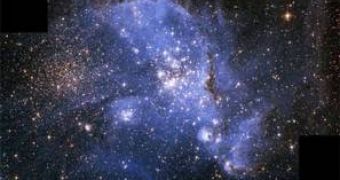Previously it was believed that the material inside stars is mixed in a homogeneous and predictable way, bringing matter from deep inside the core to the surface and vice versa. However, predictions don't always turn out the way scientists want to. It now seems that increasing the spin rotation of a star renders material in a layered configuration similar to that of a cake to create a marbled effect.
All stars must spin, regardless of how fast. Cold stars, for example, in their final stages of life spin the slowest. Our Sun, which is an average star in the middle of its life, experiences a spin rotation of 7,200 kilometers per hour, meaning it can complete a rotation about its axis every 30 days or so, while some of the hottest stars in the universe can reach spin speeds up to 960,000 kilometers per second.
This rotation, similar to that of the Earth's iron core, determines the induction of electric currents through the material in the star's core which in turn move matter from the core to the surface, including some of the heaviest elements produced through nuclear fusion reactions, such as nitrogen.
"Current models of star rotation could be compared to a food processor. As you turn up the speed, the mixing between the layers of the star becomes more thorough and more nitrogen should be visible at the surface," said lead researcher Ian Hunter from the Queen's University of Belfast in Norther Ireland.
But while comparing the nitrogen concentration of rapid rotating stars against that of slow rotating ones, Hunter discovered that 20 percent of slow spinning stars have more nitrogen on their surface, but less than the concentrations expected on 20 percent of fast rotating stars. The research was based on measurements made on 800 young stars in two galaxies in the Local Group, the Large and Small Magellanic Clouds.
"The food processor model doesn't seem to be working, or at least can't explain the whole picture," explained Hunter. The reason for this might be that slow rotating stars could have powerful magnetic fields which prevent them from accelerating to higher spin rates and provide a mixing mechanism for the material at the same time.
"This is, however, very speculative," said Philip Dufton from Queens University. Alternatively, the insufficiency of nitrogen at the surface of fast rotating stars cannot be explained through any known mechanism. "The only idea that we have is that they could be part of a binary system, and that a recent interaction between them spun up the star. So for most of its life the star rotated slowly and no mixing occurred," concluded Dufton.
The findings of the study conducted by Hunter have been detailed at the Royal Astronomy Society's National Astronomy Meeting, taking place this week in Ireland.

 14 DAY TRIAL //
14 DAY TRIAL //